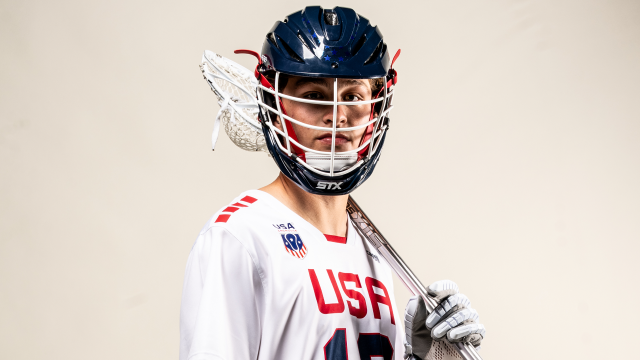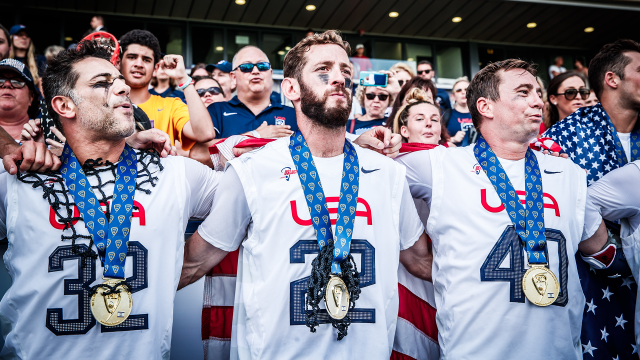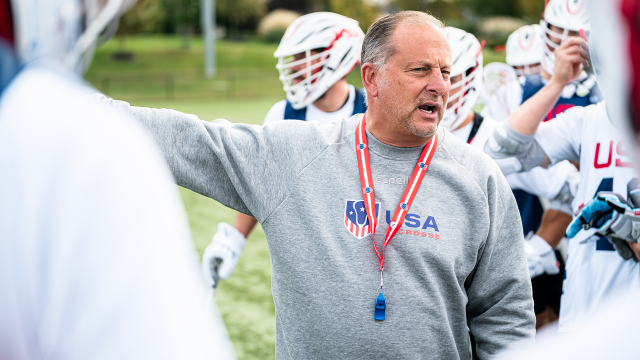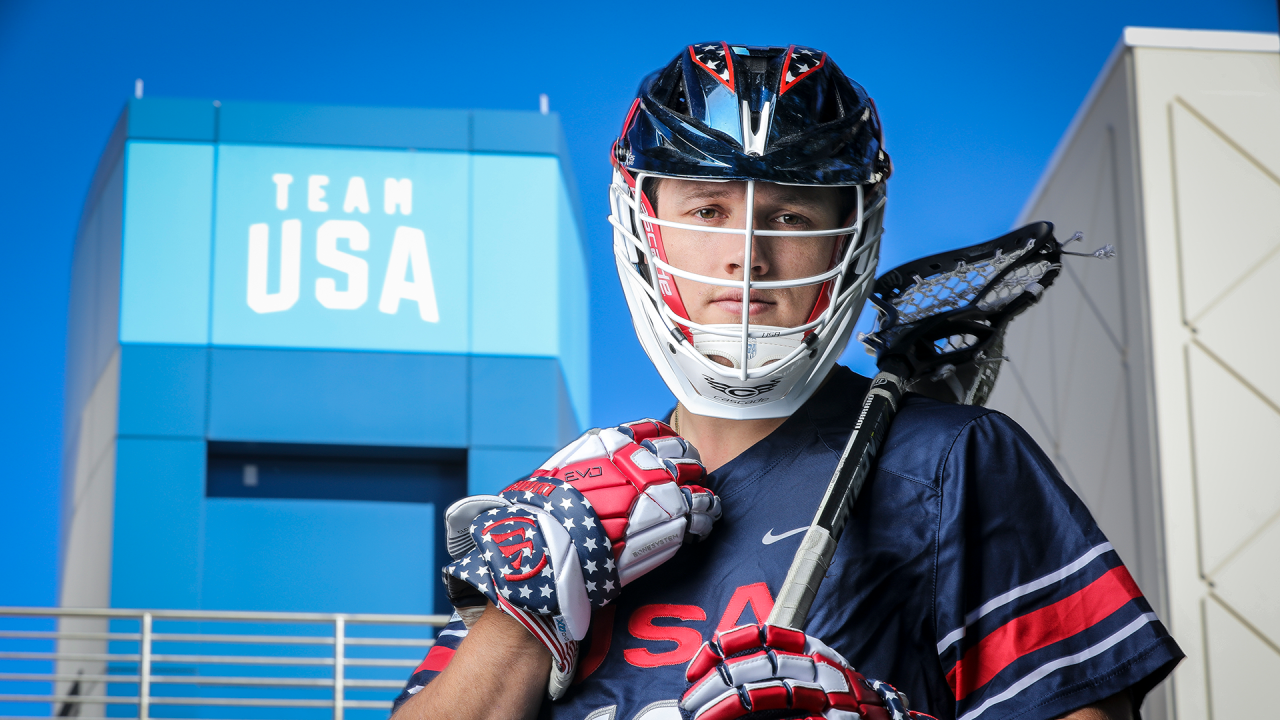
The New Pinnacle: Lacrosse, the Olympic Movement and LA28
BILL TIERNEY ALLOWED HIMSELF JUST ONE “PIE IN THE SKY” INDULGENCE.
The recently retired Hall of Fame lacrosse coach known for his notoriously red-faced quarrels with officials sounded almost Zen as he considered the news of the day.
The International Olympic Committee’s executive board had just accepted the Los Angeles 2028 organizing committee’s recommendation to add lacrosse and four other sports to the 2028 Olympics. Three days later, at the 141st IOC Session in Mumbai, India, a group of about 90 IOC members voted nearly unanimously to approve the package.
For the first time in 120 years, lacrosse will be an Olympic medal sport.
Tierney, 71, coached the 1998 U.S. men’s national team in a world championship that brought 11 teams from around the world to Baltimore. Twenty-five years later, lacrosse is played in nearly 100 countries on six continents.
As war rages and humanitarian crises mount in eastern Europe and the Middle East, perhaps lacrosse — a sport the Indigenous peoples of North America played to heal the afflicted and settle disputes — can open people’s hearts.
“You hope that it’s recognized as a sport for everyone,” said Tierney, the president of the Intercollegiate Men’s Lacrosse Coaches Association. “If we really care to make it worldwide — if we really believe in the Indigenous [origin] and the Creator bringing the game to us especially in these days of conflict — maybe lacrosse can be a unifying thing.”
In the IOC, they call it Olympism, “a philosophy of life which places sport at the service of humanity.” Maybe the world needs lacrosse as much as lacrosse needs the world. At the IOC Session, LA28 chief operating officer John Harper told the assembled sports leaders that lacrosse would add “the narrative of heritage and unity” to the 2028 Games.
Now it’s time to uphold that legacy.
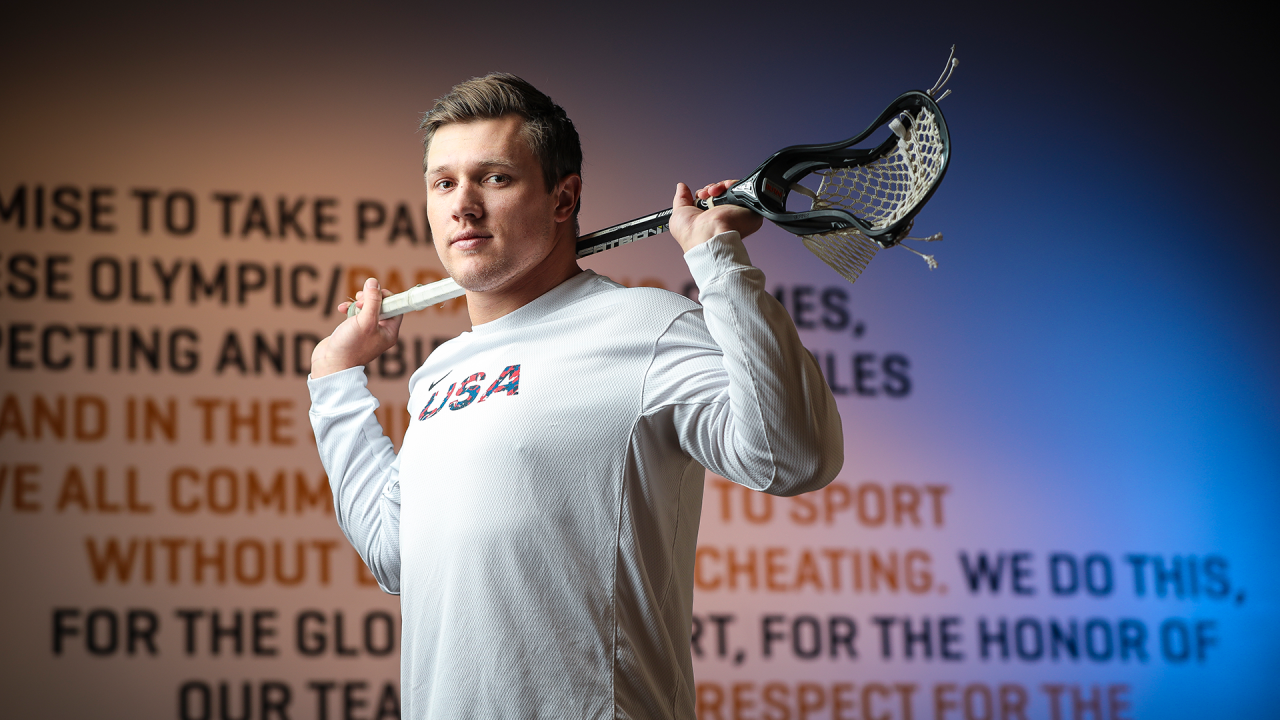
Danny Logan, for one, is already doing the math.
“I’ll be just on the other side of 30,” said Logan, a short-stick defensive midfielder for the gold medal-winning 2023 U.S. men’s national team and part of the 2024 U.S. men’s box national team player pool. “Hopefully the body hangs on and my career and life are in a good spot to make a run at it. It’s in the back of everyone’s mind.”
The Olympics are in Logan’s blood. His late uncle, Jud, was a four-time U.S. Olympic hammer thrower who once set an American record when he flung a 16-pound metal ball 268 feet, 8 inches. Logan never got to see him compete, but as a young boy he gawked at the tattoo of the intersecting rings stretched across his uncle’s gargantuan left calf.
A budding lacrosse star from Ohio who played for Tierney at Denver and competes professionally in both the Premier Lacrosse League (Atlas LC) and the National Lacrosse League (San Diego Seals), Logan followed closely the negotiations with LA28 and the IOC. Seals owner Joe Tsai, the billionaire co-founder and chair of Alibaba Group who played lacrosse at Yale, is a key stakeholder in the sport’s growth globally.
“This is now the new pinnacle of the sport,” Logan said, “winning an Olympic medal.”
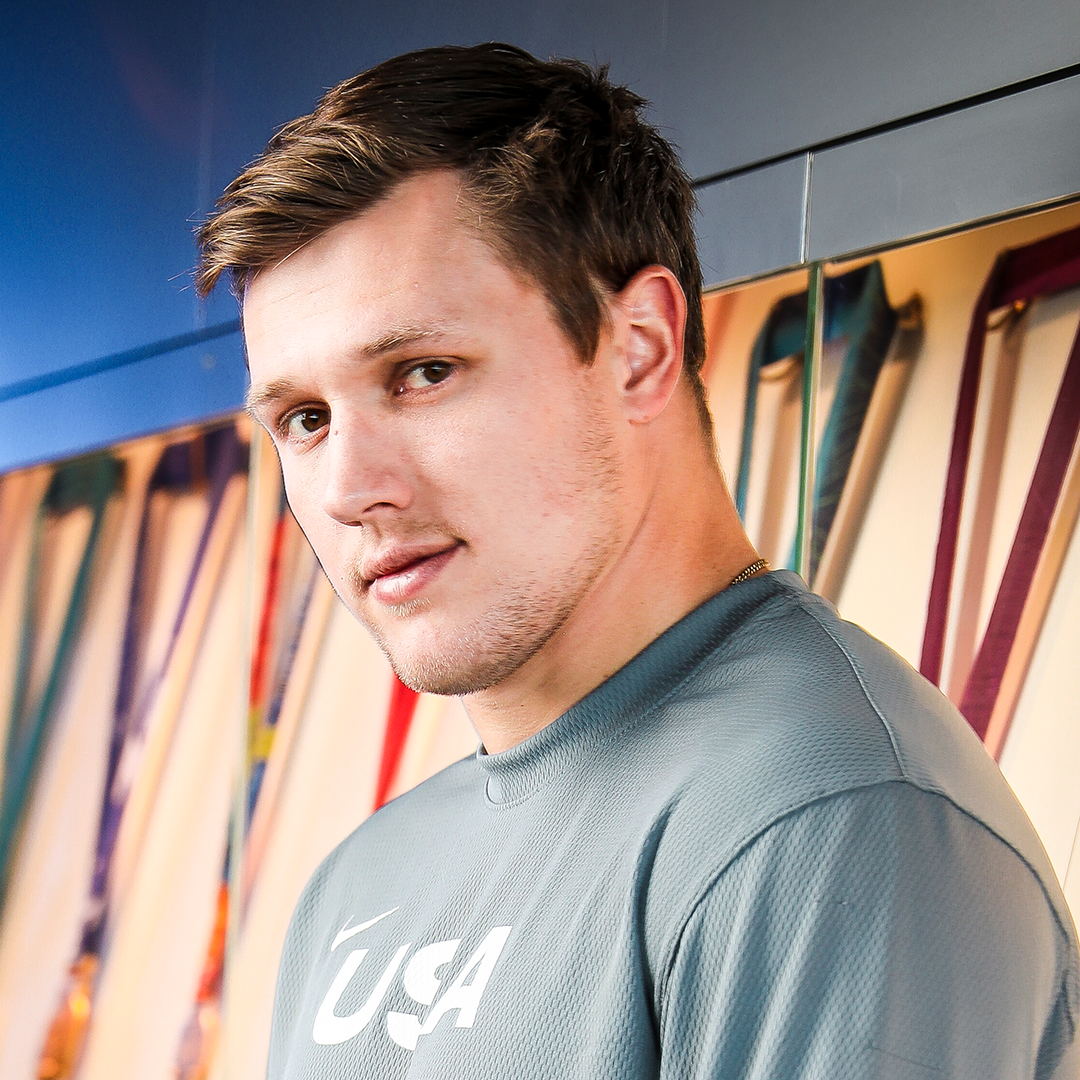
This is the new pinnacle of the sport, winning an Olympic medal.
Danny Logan
Logan isn’t the only USA athlete with Olympic family connections. PLL MVP Tom Schreiber, a member of the U.S. men’s national team (field, box and sixes) since 2017, couldn’t make it to Rio when his wife, Kathleen, competed in the 2016 Rio Games for the U.S. field hockey team. They were during the Major League Lacrosse playoffs.
“An incredible step for the game. As somebody who has had the opportunity to don the USA jersey before, it’s special,” Schreiber said. “I love the Olympics. The Olympics are close to my heart. I know how special an event it is and how cool it will be for the game to get that worldwide recognition.”
Dempsey Arsenault’s great-grandfather, Bob McAllister, was a 100-meter sprinter who competed in the 1928 Olympics. A New York police officer, he was known as "The Flying Cop." Arsenault's family kept a paper chart of each Olympic Games, the events and the countries that medaled. Arsenault and her brother, Ryder, fought over who got to fill in the boxes.
A midfield dynamo for the world champion 2022 U.S. women’s national team, Arsenault like Logan hopes she’s still in her prime to represent her country at the Olympics a century after her great-grandfather did.
“I am not sure what capacity I will be representing the U.S., whether it’s competing for a roster spot or cheering as loud as I can from the stadium,” she said. “Regardless, the inclusion of lacrosse in the 2028 Olympics holds tremendous significance for everyone in the lacrosse world.”
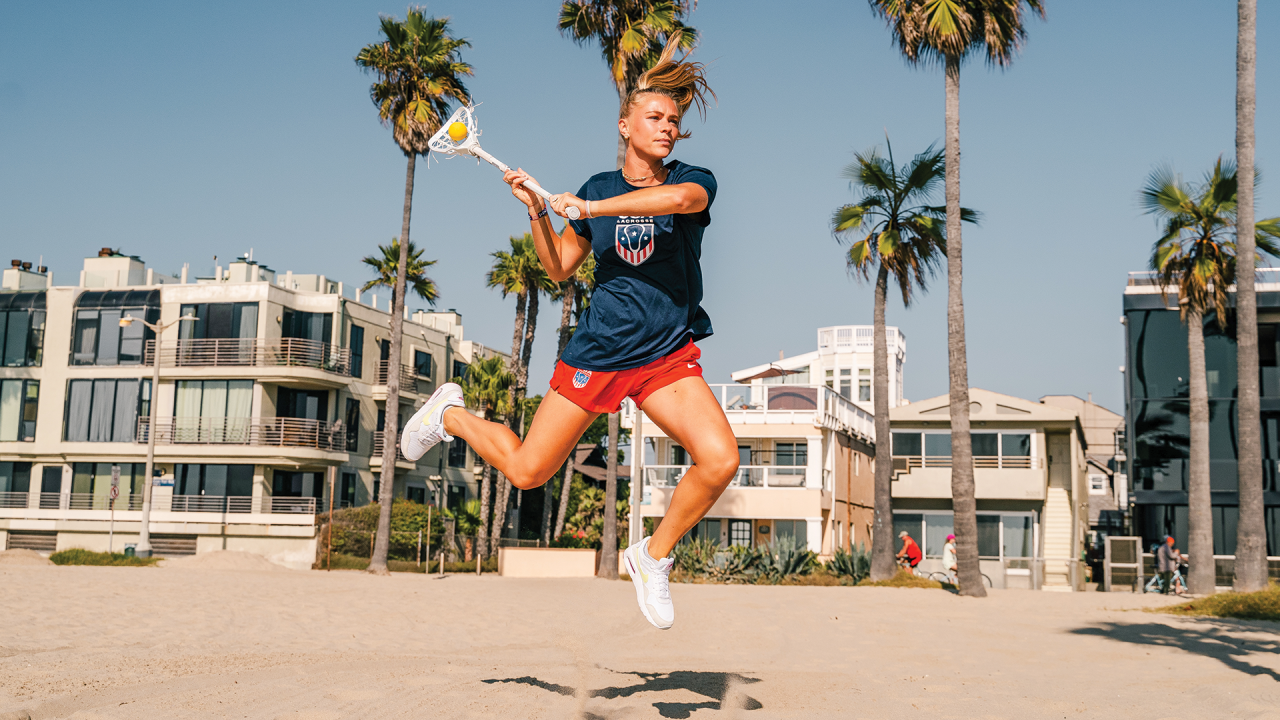
Lacrosse was a medal sport in the Olympics in 1904 and 1908. Appearances as a demonstration sport followed in 1928, 1932 and 1948.
World Lacrosse has built its case for a return to the Olympics over the last 15 years, starting with the 2008 merger of the men’s and women’s international federations.
The IOC granted provisional recognition to World Lacrosse in 2018, unlocking funding for development and giving the international federation three years to conform with the Olympic Charter in the areas of governance, anti-doping and competition integrity.
World Lacrosse cleared every obstacle and received full recognition by the IOC in 2021.
The following year, the sport was shortlisted for inclusion in LA28 and went through a comprehensive evaluation and proposal process, leading to the IOC’s final decision Oct. 16.
The moment of truth came at 3:41 a.m. Eastern time when the IOC Session ratified a proposal to add five sports — baseball/softball, cricket, flag football and squash are the others — to the 2028 Olympic Games in Los Angeles.
“It’s a long time coming,” said Charlotte North, an attacker on the 2022 U.S. team and forward on the 2024 U.S. women’s box training team. “It’s such an exciting sport that is growing so fast. The numbers show it. The product shows it. It’s exactly what this sport deserves.”
One of the sport’s most popular players — male or female — North’s physics-defying moves on the field and ability to connect with her enormous social media following make her the perfect pitch person for the Olympics.
LA28 considered both the relevance of the sports being added as well as the economic feasibility of staging competition, favoring those that could be played at existing Southern California venues. Committee chairman Casey Wasserman said he hoped the additions “will bring new athletes to the Games, engage diverse fan bases and expand the Games’ presence in digital spaces.”
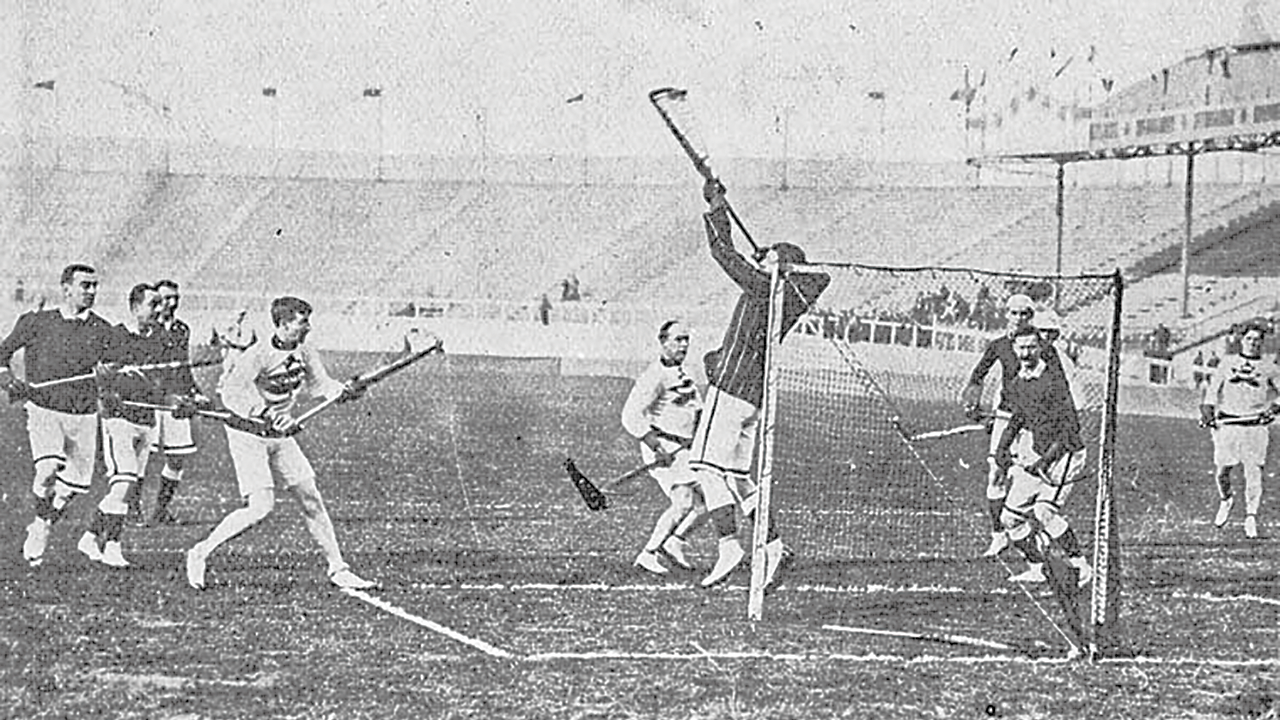
USC has an NCAA Division I women’s lacrosse team, as do five other universities in California. While the growth of the women’s game has kept up with and even outpaced that of the men’s game here in the United States, the same can’t be said internationally, said Liz Robertshaw, president of the Intercollegiate Women’s Lacrosse Coaches Association.
“I’m so excited by the news and what it can do for our sport in the global landscape — both in visibility but even more in helping to fund a lot of the countries that are emerging,” said Robertshaw, who was an assistant coach for the U.S. women’s national team for nine years. “Now that lacrosse has the stamp of approval from the Olympics leading into 2028, it gives these countries time to invest in it. And selfishly, let’s also make sure we’re investing on the women’s side, which doesn’t always happen.”
“It will show the world how beautiful this sport is,” said Ally Mastroianni, who also played for the 2022 world championship team.
The 2028 Olympics will feature men’s and women’s sixes — a fast-paced, high-scoring hybrid of box and field lacrosse with smaller rosters, shorter games and intuitive rules a casual fan can understand. World Lacrosse developed the six-per-side discipline as a version of sport that fit within the modern Olympic framework. Sixes is fully equitable and essentially the same game across genders.
“It’s a faster game. You can’t be as specialized. You’ve got to be more multiverse,” Robertshaw said. “I’m excited to see the product all these countries put on the field and they have a solid four years to work on it.”
Sixteen teams scored more than 1,000 goals in 34 games — roughly a goal every 75 seconds —when the sixes discipline went global at The World Games 2022 in Birmingham, Alabama. The Japanese men’s team claimed its first-ever top-three finish with a thrilling win over Great Britain in the bronze medal game.
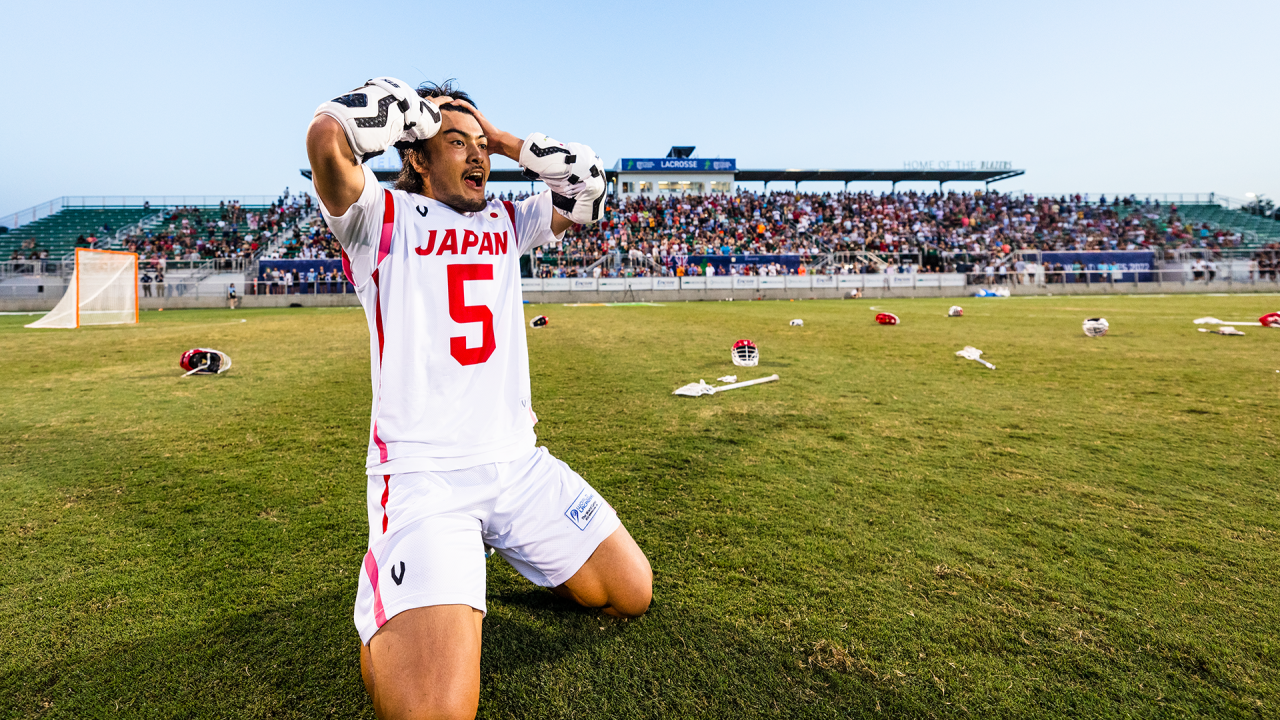
Surely, LA28 and the IOC were watching.
“It really evens the playing field for countries,” said Crysti Foote, who played in four world championships for the Canadian women’s national team and coached the U.S. team at Super Sixes in Ontario in October. “Typically in field, with more players, the U.S., Canada and Australia dominate. Sixes will help close the gap and the Olympics brings us closer to that.”
Most players love sixes. The PLL and Athletes Unlimited adapted the discipline for offseason events. U.S. athlete Brian Tevlin enjoyed his experience at The World Games so much, he brought it to Notre Dame for a fall ball intra-squad series. Former Syracuse field hockey and lacrosse standout Sam Swart says it’s her favorite version of the game.
Some coaches and fans, however, have spoken out against sixes, saying it veers too far from traditional field lacrosse. It’s jarring to see goalies under siege, turning and raking immediately after goals and putting the ball back into play. The eight-minute running quarters and 30-second shot clocks fly by. Blink and you might miss the play of the game, like Jeff Teat’s absurd one-handed, behind-the-back goal from no angle with a defender draped across his back in Canada’s win over the United States in the World Games final.
Both Tierney and Robertshaw consider themselves traditionalists who have accepted sixes as what will put lacrosse in front of billions of viewers worldwide and spur growth in developing nations.
“It’s an easy argument. We’re in,” Tierney said. “We needed another way. All the people who have done all this work have gotten us a hell of a lot further than the rest of us in the last hundred years.”
“I don’t think it hurts us in terms of showcasing a beautiful game — the athleticism, the finesse, the scoring, the creativity. It’s just a different look,” Robertshaw said. “You’re seeing growth in rugby because of rugby sevens. It’s not the traditional game. But that’s what’s in the Olympics. It’s a steppingstone to the full-field game.”
“You know what? It’s lacrosse,” Tierney added. “It’s spreading to places we had no idea it would ever go. As long as there are sticks in hands and smiles on faces, I’m good with it.”
The other sticking point with the Olympics is the eligibility of the Haudenosaunee Confederacy, which has competed as a sovereign entity in World Lacrosse championships since 1990 but whose participation in the LA28 Games would require the IOC to make an exception to the rule that teams come from independent states recognized by the United Nations and be sanctioned by a national Olympic committee.
World Lacrosse worked with the International World Games Association and other participating nations to secure a spot for the Haudenosaunee in The World Games last year. They will attempt to do the same with LA28 and the IOC, which in the spirit of the Olympic Games has previously allowed delegates from non-U.N. representatives such as Hong Kong, American Samoa and Puerto Rico.
“The Indigenous people of North America created lacrosse,” Wasserman told Sportico. “If we could find a solution to allow them to compete, that would be incredible. I think it would be a really powerful moment for our country and for the sport.”
It was, after all, a Mohawk team that competed against Canada and the United States at the 1904 Olympics, claiming the bronze medal. One of the Canadian teams in the 1932 demonstration — played in front of 75,000 fans at the Los Angeles Memorial Coliseum who were there for the marathon finish — consisted of Haudenosaunee athletes.
“We welcome this opportunity to build upon that historic legacy,” the Haudenosaunee Nationals said in a statement. “We have been heartened by the support we have received from the Los Angeles 2028 Committee for our inclusion. We would be thrilled to be involved in the Games.”
Which is to say there’s work to be done. Not only with sixes and the Haudenosaunee, but also staging the 2026 World Lacrosse Sixes Championships as an Olympic qualifier, determining teams and venues and mobilizing the lacrosse community around the Olympic movement.
“In some ways, it feels like we’ve reached the finish line with so many people working toward this goal for so many years,” said Marc Riccio, president and CEO of USA Lacrosse. “In reality, this is the beginning of a bright new future. The Olympics gives our sport the platform and visibility to achieve unprecedented growth. We can’t wait to get started on the next chapter in the sport’s history.”
Matt DaSilva
Matt DaSilva is the editor in chief of USA Lacrosse Magazine. He played LSM at Sachem (N.Y.) and for the club team at Delaware. Somewhere on the dark web resides a GIF of him getting beat for the game-winning goal in the 2002 NCLL final.
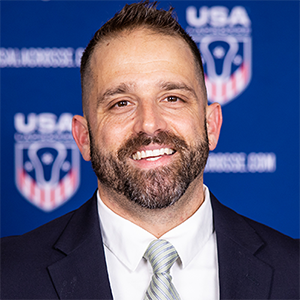
Related Articles
